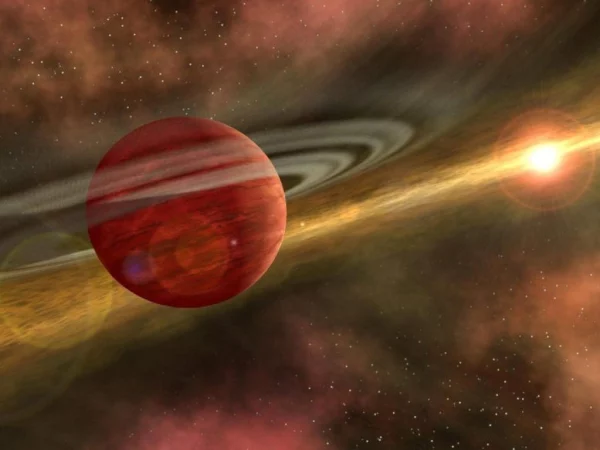Exploring the universe has never ceased to captivate us, and this time, astronomers have discovered 18 new gas giant planets orbiting stars larger than the Sun. These planets, comparable in size to Jupiter, bring the total number of exoplanets to over 700. This is not only a step forward in discovering new worlds but also a key to understanding the formation and evolution of planetary systems in the universe.
The discoveries were made with the help of the Keck Observatory in Hawaii, where scientists analyzed more than 300 A-type stars, each with masses at least 1.5 times that of the Sun. They used a technique that observes subtle oscillations in the motion of host stars caused by the gravitational pull of orbiting planets. “Thanks to the high precision of our instruments, we confirmed the existence of these new planets, all located at least 0.7 astronomical units away from their host stars,” the research team from the University of California noted in their 2024 report.
“Each new exoplanet is a crucial piece of the puzzle, helping us visualize the big picture of star system formation,” (Nature Astronomy, 2023).
A particularly noteworthy feature is that most of these planets orbit “retired” stars—those that have passed their most active phases. This suggests that although larger stars tend to emit more heat and light, they can still support the formation and long-term survival of gas giant planets. New data from telescopes not only clarify the orbital structure of these planets but also provide valuable insights into their atmospheric environments.

Previously, interest in exoplanets surged when the James Webb Space Telescope detected CO2 and methane in the atmosphere of K2-18b, a planet that could potentially support life. This discovery further raises expectations that gas giant planets like the 18 newly identified worlds might hold critical clues about how life develops in the cosmos.
“Gas giant planets are not only key to understanding star system formation but also open up possibilities for finding signs of life in the vast universe,” (NASA, 2023).
As the number of discovered exoplanets continues to grow, scientists are moving closer to answering some of the most profound questions: Are we alone in this universe? And could there be Earth-like worlds among the billions of stars across the Milky Way? These discoveries are not only scientifically significant but also deeply inspiring, bringing humanity closer to the possibility of exploring distant planets in the future.


HPX24h > Space > 18 New Planets: Unlocking the Gateway to Exploring Giant Star Systems
Top Reads from This Category
Space
3D Lunar Map: A New Gateway to Understanding the Universe
Space
Over 100 Billion Planets in the Milky Way: Astonishing Discoveries About the Universe
Space
Three Earth-Like Planets That Could Support Life: New Discovery from NASA
Space
Jupiter-Like Planets: The Key to Unlocking Earth-Like Worlds
Space
The Relationship Between Star Formation and the Activity of Supermassive Black Holes
Space
Tidal Heating: A New Challenge for Extraterrestrial Life
Space
The Milky Way’s Central Black Hole: The Asteroid Annihilator
Discover New Topics
Animals
Can Maggots Heal Wounds Faster Than Surgery?
Science
New Discovery: How the Brain Manages Emotions and Memory
Healthy Eating
Essential Nutrition: The Golden Key to Comprehensive Health
Science
NSF Job Cuts: Who Benefits and Who Bears the Consequences?
Science
Discover Blood Testing Technology Without a Visit to the Doctor
Science
Extinct Black Rhinos Could Make a Comeback with Genetic Technology
Healthy Eating
Effectively Lower Blood Pressure with 4 Common Kitchen Vegetables
Science
The Science Behind CRISPR: Can Animal Genetic Modification Lead Us to a Better Future?
Uncategorized
Why Do Experts Believe Alzheimer’s Is an Autoimmune Disease Rather Than a Brain Disorder?
Science
New Hope from Cyborg Spinal Implant Technology for Paralyzed Patients
Fitness
Fat-Burning Heart Rate: The Key to Optimizing Your Workout
Science
NSF Workforce Cuts – Which Path Will the U.S. Take to Stay Competitive in the Global Tech Race?
Fitness
Exercise – The ‘Miracle Cure’ to Awaken Overall Health